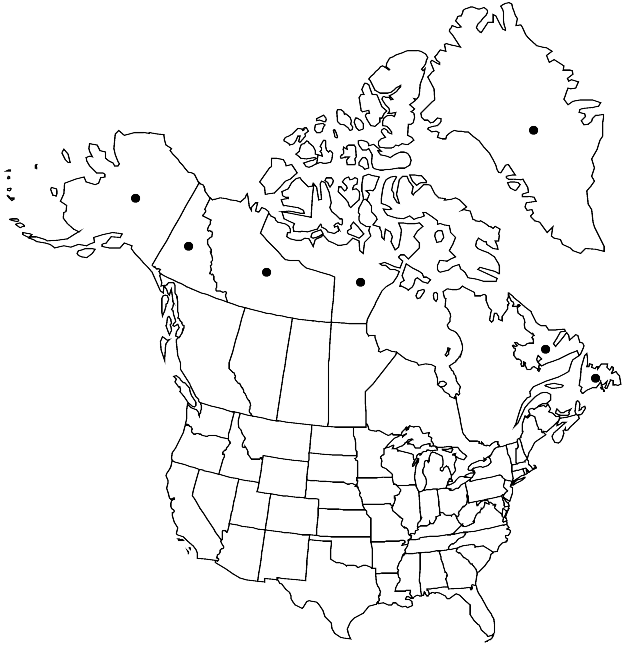Ptychostomum longisetum
Phytologia 87: 21. 2005.
Plants in dense or open turfs, green or yellow-green. Stems 1–2(–3) cm, comose, innovations comose or somewhat elongate and evenly foliate; not strongly radiculose. Leaves green or yellow-green, twisted to contorted when dry, ovate to broadly ovate-lanceolate, weakly concave, 1–2(–3) mm, enlarged toward stem apex; base not or weakly decurrent; margins revolute to mid leaf or beyond, limbidium strong, in 2 or 3 rows; apex acute; costa short-excurrent, awn recurved, denticulate; proximal laminal cells 3–4:1, same width or sometimes wider than more distal cells; medial and distal cells rhomboidal, 12–18 µm wide, 2–3:1, walls usually thin to firm. Specialized asexual reproduction absent. Sexual condition synoicous. Seta 3–6(–8) cm. Capsule brown, elongate-pyriform, symmetric, 2–4 mm, mouth yellow; operculum conic, apiculate; peristome well developed; exostome teeth yellow basally, hyaline distally, lamellae usually straight mid tooth, pores absent along mid line; endostome not adherent to exostome, basal membrane high, less than 1/2 exostome height, segments with broadly ovate perforations, cilia short, rudimentary. Spores variable in size, (38–)40–50 µm, finely papillose, pale yellow-brown or green.
Phenology: Capsules mature Jun–Sep.
Habitat: Damp soil in wetlands
Elevation: low to moderate elevations (0-600 m)
Distribution

Greenland, Nfld. and Labr., N.W.T., Nunavut, Yukon, Alaska, Eurasia.
Discussion
Ptychostomum longisetum is a circumpolar arctic-boreal species related to P. inclinatum. Gametophytically it is similar to P. intermedium and P. salinum but differs in the extremely long seta and very large spores.
Selected References
None.